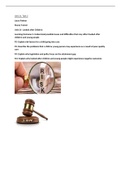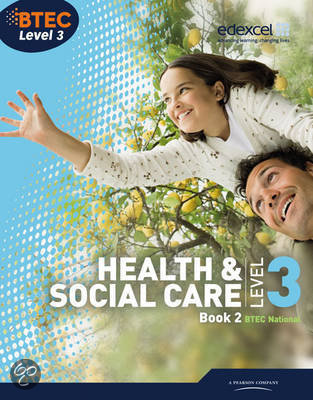Unit 21, Task 2
Laura Palmer
Stacey Tanner
Unit 21- Looked after Children
Learning Outcome 2- Understand possible issues and difficulties that may affect looked after
children and young people
P2- Explain risk factors for a child going into care
P3- Describe the problems that a child or young person may experience as a result of poor quality
care
P4- Explain why legislation and policy focus on the attainment gap
M1- Explain why looked-after children and young people might experience negative outcomes
, In this assignment I will explain risk factors for a child going into care. I will also describe the
problems that a child or young person may experience as a result of poor quality care. I will also
explain why legislation and policy focus on the attainment gap. Finally, I will explain why looked-after
children and young people might experience negative outcomes.
P2- Explain risk factors for a child going into care
The risk factors for a child to end up going into care are the following: physical abuse, sexual abuse,
neglect, domestic abuse or dangerous people in the home, abandonment, family breakdown, family
illness or death, as well as offending behaviour.
“Attachment is a deep and enduring emotional bond that connects on person to another across time
and space.” (Ainsworth, 1973; Bowlby, 1969). Bowlby’s evolutionary theory of attachment suggests
that if a child doesn’t form an attachment in the critical period of 0-5 years they will suffer from
irreversible developmental consequences, such as reduced intelligence and increased aggression.
The learning, behaviourist theory of attachment suggests that attachment is a series of learned
behaviours, based upon the provision of food. Therefore, an infant will initially form an attachment
with whoever feeds them. the child learns that certain behaviours can bring desirable responses and
repeat these behaviours to get the things that they want and need. (Tanner.S, Class notes, 2022)
Attachment is learnt by a newborn through kangaroo care. Kangaroo care is a way of holding a baby
that involves skin-to-skin contact. Kangaroo care helps to stabilise a baby’s heart rate, it is thought
that a baby’s heart will beat to the same rhythm as their mother’s by carrying out kangaroo care.
The attachment theory helps children to develop confidence, as they know they can go back to their
safe space and person. If a bond is weak a child may be afraid to do things for themselves and could
develop learned helplessness. Insecurely attached children lack social skills, have difficulty trusting
others and may struggle to form bonds and relationships with others. The attachment theory also
explains how a child may not be able to regulate their emotions. For example, a child might have to
scream to be able to get their mothers attention. If this continues through to adulthood, they may
develop anxious ambivalent attachment style. Bowlby suggests that if someone does not have a
strong attachment it can cause issues with them developing relationships, cause anger issues,
mental health issues, and may lead to substance abuse. Bonding will also help the child be able to
express how they feel, which helps them regulate their emotions, which they may be lacking if they
are a looked after child and moving placements multiple times in their lives.
Another factor that may lead to a child going into care is separation, loss, and trauma. A child who is
looked after will experience separation. They are separated from their parents. They may also
experience separation from their siblings, as often some placements only have room for one child.
Children who go into care lose some of their identity, and what they know. They are often scared of
what’s to come and what is going to happen to them. Children who go into care often have very little
time to say goodbye to their families. The time can vary from 10 minutes to an hour, depending on
how many children social workers have to take into care that day. Children who go into care often
experience trauma either from what happened to them before they went into care, or from the
actual experience of being taken into care. (Tanner.S, class notes, 2022) Children will experience
separation from many settings and people. They will be separated from their home, school, if they
have to move from the area they live in, friends, and family. Separation, loss, and trauma can cause
depression, stress, anxiety, self-harm, and suicidal thoughts. Feelings of guilt or loss will affect each
child differently, it will also depend on the age of the child. The child will need to build up trust with
their new carers. A child will also experience feelings of loss if they have had to move setting and
may not have many of their belongings with them. “Infants also find comfort in familiar smells-





